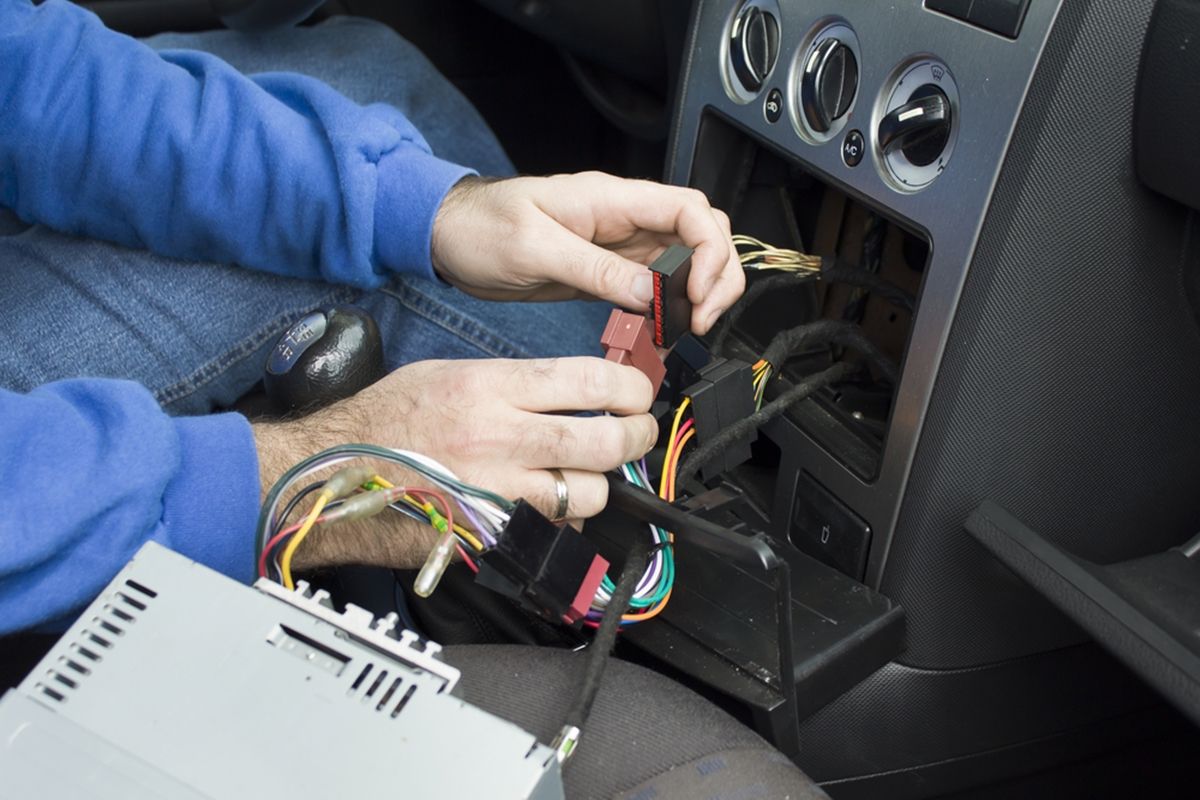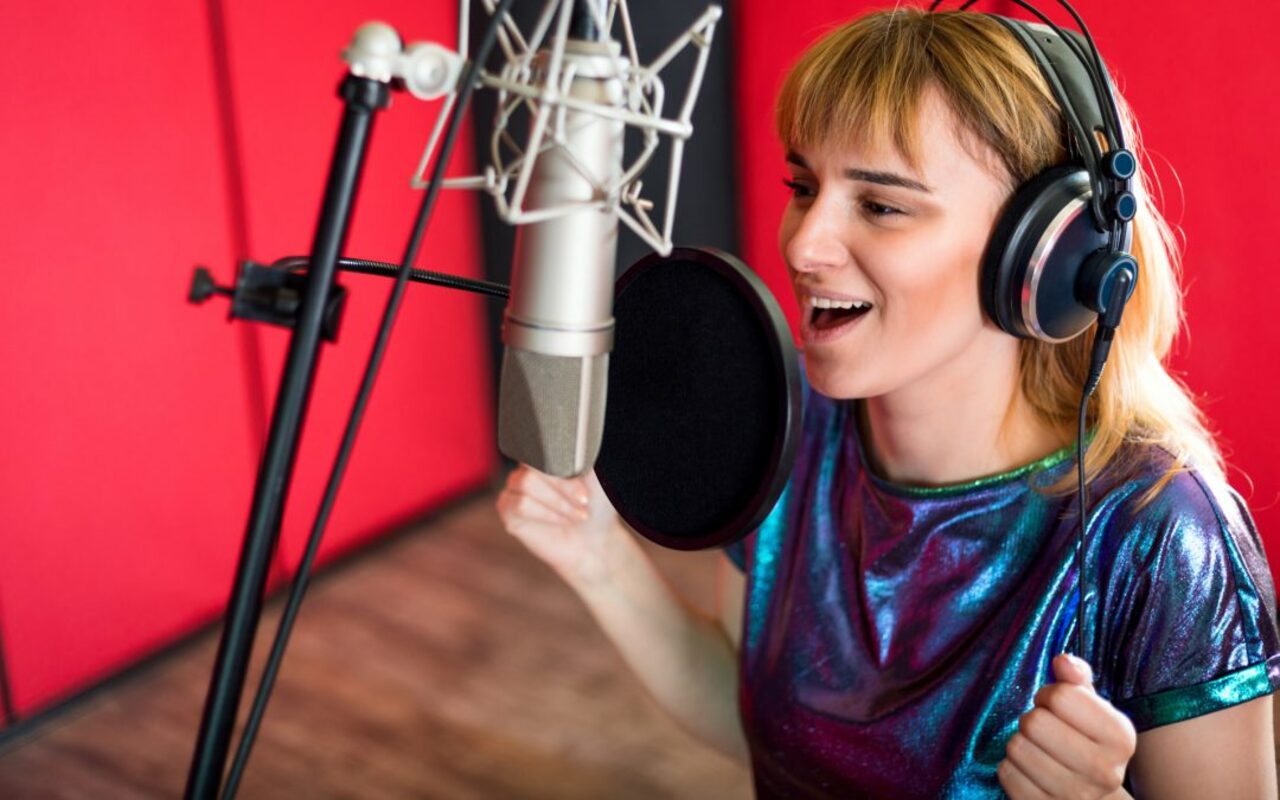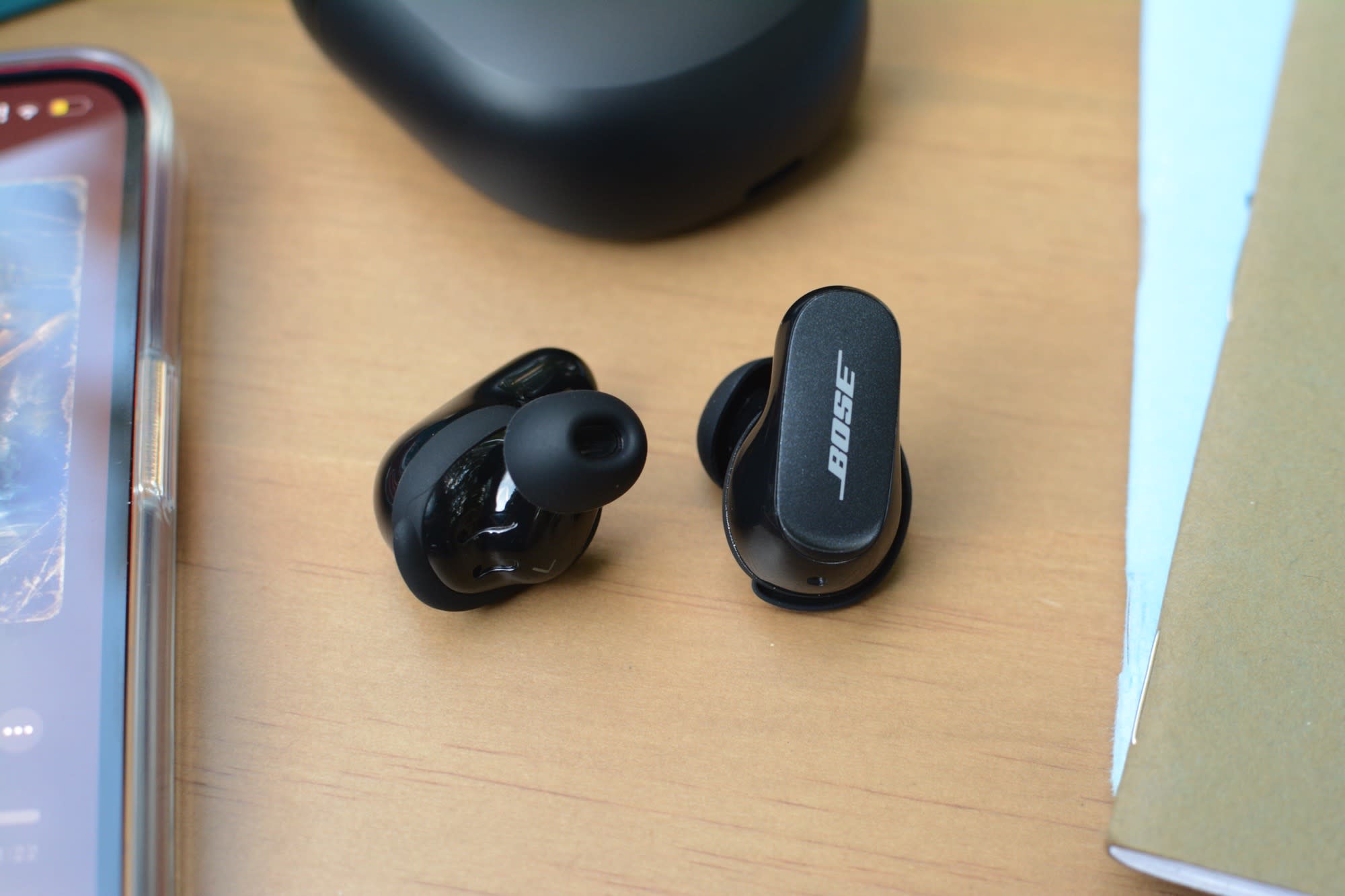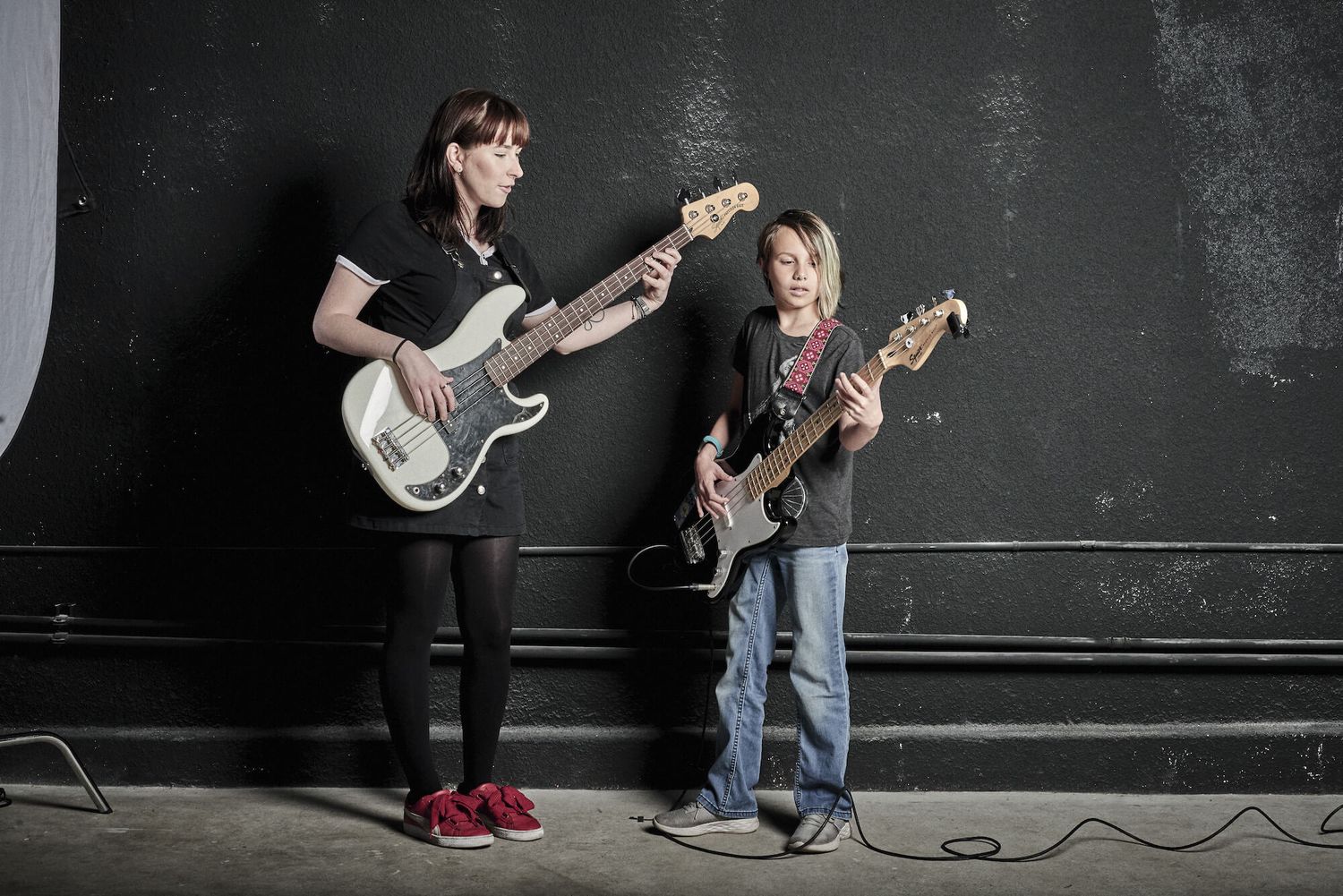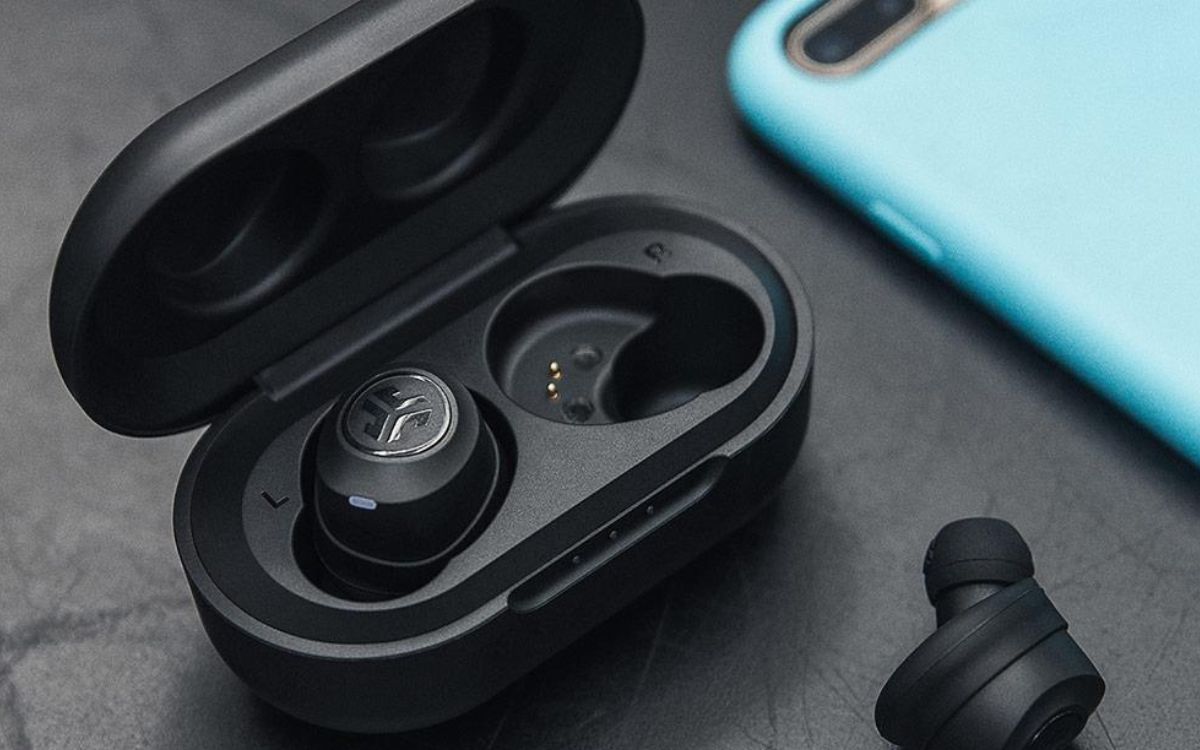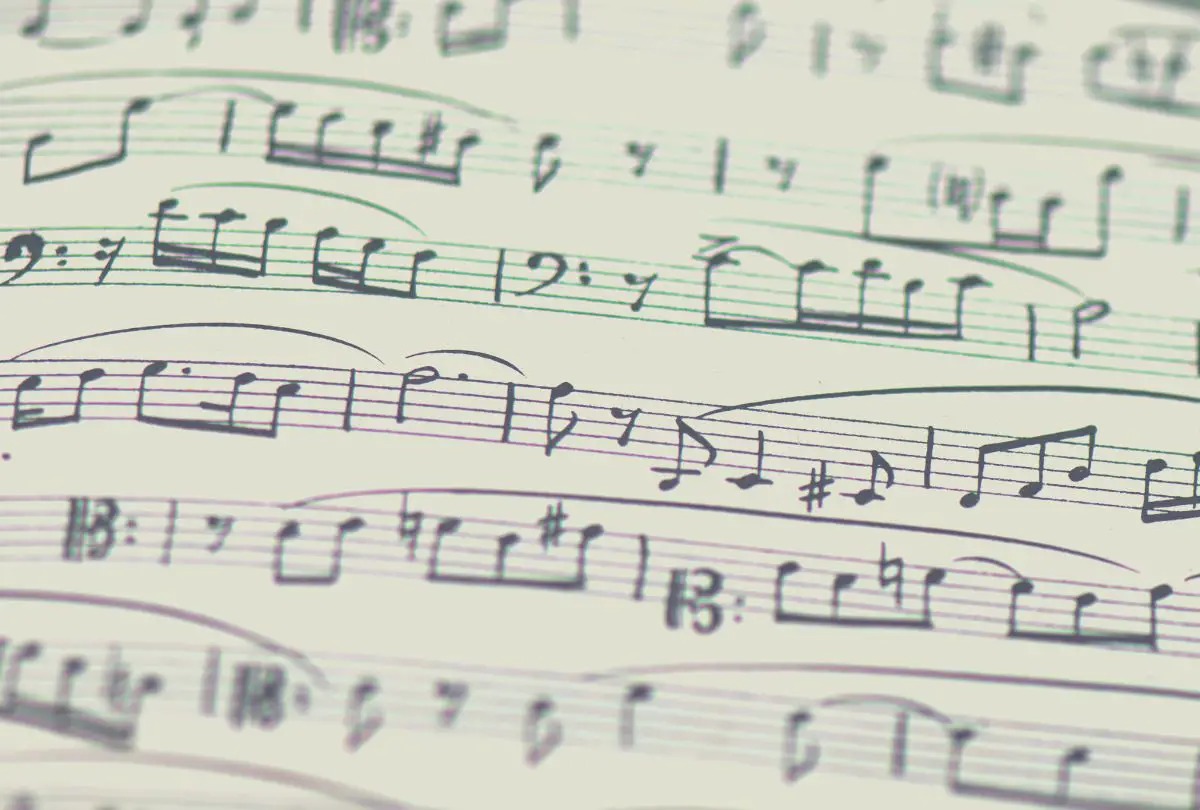Home>Production & Technology>Music Video>How Long Does A Music Video Shoot Take
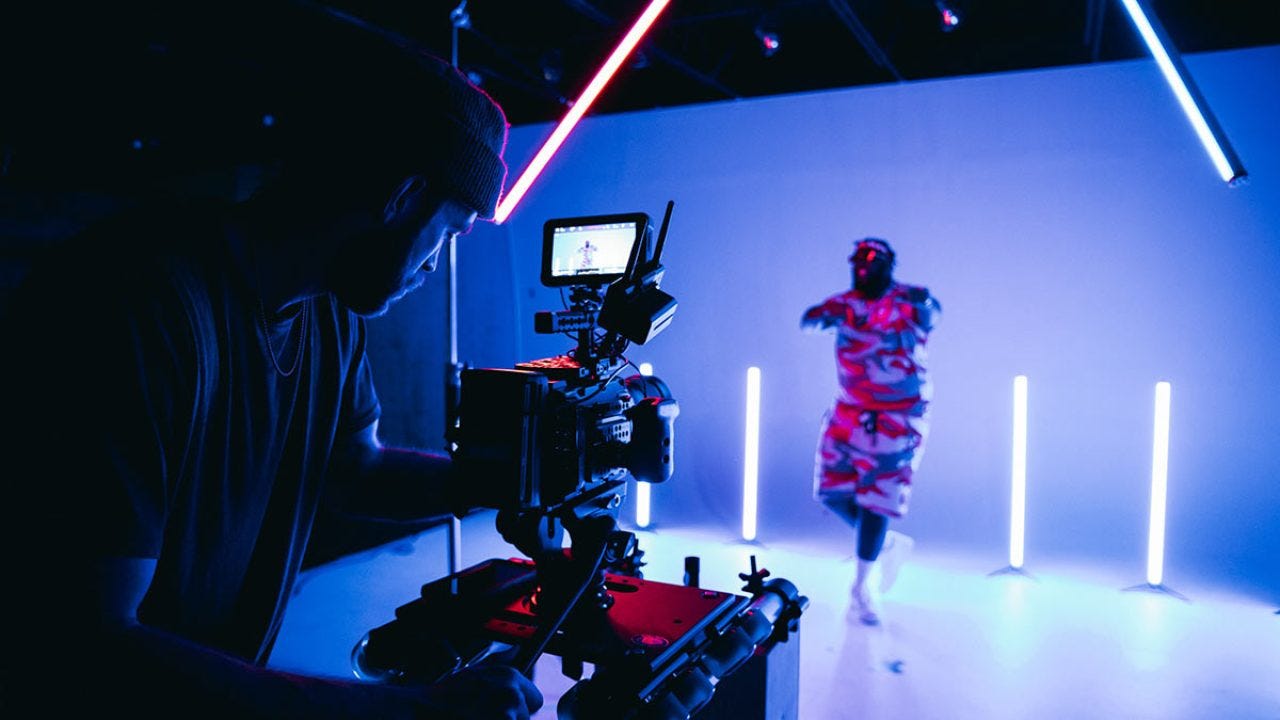

Music Video
How Long Does A Music Video Shoot Take
Modified: March 7, 2024
Discover how long it takes to shoot a music video. Get insights into the duration and process of creating captivating music videos.
(Many of the links in this article redirect to a specific reviewed product. Your purchase of these products through affiliate links helps to generate commission for AudioLover.com, at no extra cost. Learn more)
Table of Contents
- Introduction
- Pre-production
- Location Scouting
- Set Preparation
- Costume and Prop Selection
- Casting and Rehearsals
- Production
- Setting up Equipment
- Filming the Performance
- Filming Narrative Scenes
- Filming Additional Shots
- Post-production
- Video Editing
- Color Grading and Visual Effects
- Sound Design and Music Editing
- Finalizing the Video
- Conclusion
Introduction
Music videos have become an integral part of the music industry, serving as a visual accompaniment to songs that can captivate and engage audiences in unique ways. From iconic dance moves to visually stunning storytelling, music videos have the power to bring a song to life and leave a lasting impression on viewers.
But have you ever wondered how long it takes to create a music video? The process of shooting a music video involves various stages of pre-production, production, and post-production, each with its own set of tasks and timelines.
In this article, we will delve into the world of music video production and explore the time it takes to bring those mesmerizing visuals to your screens. From location scouting to finalizing the video, we’ll break down the process step by step.
So, whether you’re a music enthusiast curious about the behind-the-scenes magic or an aspiring artist hoping to create your own music video, let’s embark on this journey to discover how long it really takes to shoot a music video.
Pre-production
Before the cameras start rolling, there is a significant amount of work that goes into planning and preparing for a music video shoot. This phase is known as pre-production and sets the foundation for a successful shoot.
During pre-production, key decisions are made, such as the overall concept and theme of the video, the locations where it will be shot, and the wardrobe and props that will be used. Let’s take a closer look at the various aspects of pre-production:
- Location scouting: The first step is to find the perfect locations that align with the vision of the music video. This involves visiting potential sites, assessing their suitability, and obtaining any necessary permits or permissions.
- Set preparation: Once the locations are finalized, the set needs to be prepared accordingly. This may involve constructing custom sets, arranging furniture and decor, or creating specific lighting setups.
- Costume and prop selection: The next step is selecting the attire and accessories for the artists and actors involved in the video. This decision is based on the visual concept and style of the video, and may require collaborating with stylists or costume designers.
- Casting and rehearsals: If the video involves actors or dancers, casting sessions are held to find the right individuals to bring the visual narrative to life. Rehearsals are then conducted to ensure that everyone is comfortable with their roles and the choreography, if applicable.
The duration of the pre-production phase can vary depending on the complexity of the video and the availability of resources. It is crucial to allocate sufficient time for thorough planning and coordination to avoid any last-minute complications during the shoot.
With the pre-production phase complete, the stage is set for the actual production of the music video. In the next section, we will explore what happens during the production phase and the time it takes to capture the desired shots.
Location Scouting
One of the crucial steps in pre-production is location scouting, which involves finding the ideal settings to bring the music video concept to life. Choosing the right locations can greatly enhance the visual appeal and storytelling of the video.
During location scouting, the production team visits various potential sites to assess their suitability. Factors such as aesthetics, relevance to the concept, availability, accessibility, and any necessary permits or permissions are taken into consideration.
The time it takes to complete the location scouting process depends on several factors, including the availability of suitable locations and the extent of travel required. This phase can take anywhere from a few days to several weeks.
The process typically involves the following steps:
- Research: The production team conducts thorough research to identify potential locations that align with the music video’s concept. This can involve exploring online resources, scouting public spaces, or reaching out to location agencies.
- Site visits: Once a list of potential locations is compiled, the team visits each site to assess its suitability. They evaluate factors such as lighting conditions, acoustics, background noise, and any logistical considerations.
- Permissions and permits: If a location requires permits or permissions to shoot, the production team ensures all necessary paperwork is completed. This may involve liaising with local authorities or property owners to secure the required approvals.
- Scouting report: After visiting each potential location, the team compiles a scouting report that includes detailed notes, photographs, and any additional observations. This helps in the decision-making process during the next stages of production.
The duration of the location scouting phase can vary greatly depending on the complexity of the concept and the availability of suitable options. It is crucial to allocate enough time for this process to ensure the chosen locations align with the desired aesthetic and logistical requirements of the music video.
Once the locations are finalized, the production team can proceed with the next steps of pre-production, such as set preparation and costume selection, to bring the vision of the music video to life.
Set Preparation
Once the locations for the music video shoot are finalized, the next step in pre-production is set preparation. This phase involves transforming the chosen locations, both indoor and outdoor, into visually captivating and suitable settings that align with the concept of the video.
Set preparation can greatly enhance the overall aesthetic appeal and atmosphere of the music video. It involves a range of tasks to create the desired look and feel, including:
- Designing the set: Based on the concept and vision for the video, the production team works with set designers or art directors to create the desired aesthetic. This may involve sketching out the set layout, selecting or creating props and set pieces, and planning the overall visual composition.
- Decor and dressing: Once the set design is finalized, decorations and dressing are added to bring the set to life. This can involve arranging furniture, adding artwork, selecting appropriate color schemes, and incorporating any necessary special effects or practical elements.
- Lighting and ambiance: Proper lighting is crucial for setting the mood and creating the desired atmosphere of the music video. Lighting technicians work to design and set up the appropriate lighting fixtures, including spotlights, LED panels, and ambient lighting, to enhance the visual appeal of the set.
- Camera and blocking: During set preparation, the production team collaborates with the director of photography to determine the camera angles and blocking for each scene or shot. This ensures that the set is arranged in a way that provides optimal framing and visual storytelling opportunities.
The time required for set preparation will vary depending on the complexity of the music video concept and the size of the production team. It can range from a few hours for simpler setups to several days for more elaborate and intricate designs.
Efficient communication and coordination among the set designers, lighting technicians, and other crew members are vital to ensure a smooth and successful set preparation phase.
With the set prepared, the production team is now ready to move forward with costume and prop selection, casting, and rehearsals, which are crucial elements in bringing the music video to life during the production phase.
Costume and Prop Selection
Costumes and props play a crucial role in enhancing the visual storytelling and overall aesthetic of a music video. The selection of appropriate attire and accessories for the artists and actors, as well as the incorporation of props, can greatly contribute to the narrative and atmosphere of the video.
During the pre-production phase, the production team works closely with stylists or costume designers to determine the best clothing options that align with the concept and vision of the music video. Similarly, props are chosen to complement the storytelling and enhance the visual appeal.
The process of costume and prop selection typically involves the following steps:
- Concept and mood board: The production team collaborates with the director and other key stakeholders to establish a clear concept and mood for the video. This helps guide the selection process and ensures consistency throughout.
- Research and inspiration: The stylists or costume designers conduct extensive research to gather inspiration and ideas for the costumes and props. This may involve creating mood boards, referencing fashion trends, or exploring different eras or cultures.
- Collaboration and fittings: Based on the concept and inspiration, the team works closely with the artists or actors to select appropriate costumes that align with their persona and the overall vision. Fittings are conducted to ensure the proper fit and comfort of the outfits.
- Prop sourcing or creation: Props are an integral part of many music videos, and the production team may need to source or create specific props that contribute to the narrative. This can involve working with prop masters or artisans to design and create custom pieces.
The time required for costume and prop selection depends on factors such as the complexity of the music video concept, the number of artists or actors involved, and the extent of prop sourcing or creation. This phase can range from a few days to several weeks.
Attention to detail and coordination with the rest of the production team are essential during the costume and prop selection process to ensure that they align seamlessly with the set design, locations, and overall visual aesthetic of the music video.
With the costumes and props finalized, the production team can now move forward with casting, rehearsals, and eventually the production phase of shooting the music video.
Casting and Rehearsals
Casting the right talent and conducting rehearsals are essential steps in the pre-production phase of creating a music video. These steps help ensure that the performers are a perfect fit for the concept and that their performances are polished and well-coordinated.
Casting:
The casting process involves finding the right individuals, such as actors, dancers, or models, to bring the music video’s narrative or performance to life. The casting director may hold auditions, review portfolios, or consider recommendations to find the ideal talent.
The casting process can be time-consuming, especially for larger productions that require multiple roles. It often involves several rounds of auditions, callbacks, and consultations with the director and production team to make the final casting decisions.
Rehearsals:
Once the cast is finalized, the rehearsal phase begins. Rehearsals allow the performers, choreographers, and directors to work together in refining the performances, ensuring synchronization, and perfecting the choreography.
Rehearsals can take place in various settings, such as dance studios or rehearsal spaces, and the frequency and duration depend on the complexity and scale of the music video. They may involve individual practice sessions, group rehearsals, and full-run rehearsals to simulate shooting conditions.
During rehearsals, the production team collaborates closely with the performers, providing guidance and feedback to refine their performances. This includes working on timing, expression, gestures, and overall coordination with the music and other elements of the video.
The duration of casting and rehearsals can vary significantly depending on the scope and complexity of the music video. It can range from a few days for simpler performances to several weeks for elaborate dance routines or intricately choreographed scenes.
Efficient scheduling, clear communication, and a supportive rehearsal environment are crucial during this phase to ensure that the performances are well-executed and meet the creative vision of the music video.
With the casting and rehearsal phase completed, the production team is now ready to move into the production phase, where filming of the music video takes place. We will explore the production phase in the next section.
Production
The production phase is where the magic happens – it’s when the cameras start rolling, and the music video comes to life. This phase involves capturing all the planned scenes, performances, and visuals that make up the final video.
Setting up equipment:
Before filming begins, the production crew sets up the necessary equipment, including cameras, lighting, and audio recording devices. This process ensures that everything is calibrated correctly, and technical aspects are in place to achieve the desired visual and audio quality.
Filming the performance:
If the music video includes a performance by the artist or band, this is often the first aspect to be captured. The crew works closely with the performers, ensuring that the choreography or musical performance is captured from different angles and perspectives.
Filming narrative scenes:
In addition to the performance aspect, many music videos incorporate narrative scenes to tell a story or evoke certain emotions. These scenes may involve actors, props, and specific locations. The director and crew work together to carefully capture each scene, paying attention to details such as camera angles, lighting, and composition.
Filming additional shots:
In some cases, additional shots may be needed to add variety and enhance the overall visual appeal of the music video. This can include close-up shots of instruments, creative camera movements, or experimental visual techniques. These shots are captured during the production phase to provide more versatility and options during the editing process.
The duration of the production phase varies depending on factors such as the complexity of the music video, the number of scenes to be filmed, and the overall scale of production. It can range from a single day for simpler videos to several weeks for more elaborate productions.
Efficient time management, clear communication, and a well-organized production team are essential during this phase to ensure a smooth filming process and maintain the creative vision of the music video.
With the production phase completed, the footage is ready to be processed and transformed into the final music video during the post-production stage. We will explore the post-production process in the next section.
Setting up Equipment
Before the cameras start rolling and the production phase of shooting a music video begins, the production crew needs to set up the necessary equipment to ensure a smooth and successful shoot. This phase, known as setting up equipment, is crucial in achieving the desired visual and audio quality of the final music video.
The process of setting up equipment involves several key steps:
- Cameras: The production crew selects and sets up the appropriate cameras for the shoot. This can vary depending on the desired visual style and requirements of the music video. It may involve using multiple cameras, different lens options, or specialized camera rigs for specific shots.
- Lighting: Proper lighting is essential in creating the desired mood and atmosphere of the music video. The lighting crew sets up various lighting fixtures, such as spotlights, softboxes, and LED panels, to achieve the desired lighting effects. They consider factors such as color temperature, intensity, and positioning to enhance the visuals and bring out the best in the performers and locations.
- Audio Recording: Capturing high-quality audio is crucial for any music video. The sound crew sets up microphones, audio recorders, and other equipment to ensure clear and balanced audio throughout the shoot. This may involve using multiple microphones to capture different elements, such as vocals, instruments, or ambient sounds.
- Camera Accessories: In addition to cameras and lighting, various accessories are used to enhance the visual quality and stability of the shots. This can include tripods, stabilizers, cranes, or drones, depending on the specific shots required for the music video.
The time required for setting up equipment can vary depending on the complexity of the shoot and the size of the production crew. It is crucial to allocate sufficient time to ensure that all equipment is properly set up and calibrated before filming begins.
Efficient coordination and communication between the production crew members, including cinematographers, lighting technicians, and sound engineers, are essential during this phase to ensure optimal setup and functionality of the equipment.
Once the equipment is set up, the production crew and performers are ready to begin capturing the performances, narrative scenes, and additional shots that will ultimately be edited and transformed into the final music video.
Filming the Performance
One of the fundamental aspects of a music video is capturing the performance of the artist or band. This segment showcases their talent and brings the energy and emotion of the music to the visual medium. Filming the performance requires careful planning and collaboration between the production team and the performers.
During the filming of the performance, the crew focuses on capturing compelling shots that highlight the artists’ stage presence, choreography, and musicality. Here are some key considerations during this phase:
- Shot selection: The director and cinematographer work together to determine the best camera angles and perspectives to capture the performance. This includes a combination of wide shots to showcase the entire scene, medium shots to emphasize the artists’ movements, and close-ups to capture their expressions and emotions.
- Multiple takes: Depending on the complexity of the performance or specific shots, multiple takes may be necessary to ensure that the footage meets the desired quality. This can involve repeating certain sections or entire performances to capture different angles, dynamic shots, or specific moments that enhance the overall visual impact.
- Detailed coordination: The production team collaborates closely with the performers, providing guidance and feedback to ensure their movements are in sync with the music’s rhythm and that their energy aligns with the overall concept of the video. This coordination allows for smoother transitions between shots and a more polished final result.
- Visual effects: In some music videos, visual effects may be incorporated to enhance the performance shots. This can include adding motion graphics, overlays, or virtual environments. The production team works together to integrate these effects seamlessly into the footage during filming or in post-production.
The duration for filming the performance depends on various factors, including the complexity of the choreography, the number of scenes or locations involved, and the overall scale of the production. It can range from a few hours for simpler performances to multiple days for larger or more intricate setups.
Efficient time management, effective communication between the production team and performers, and a supportive and energized atmosphere during filming are crucial in capturing captivating and visually striking performance shots.
Once the performance segments have been successfully filmed, the production crew can shift focus to capturing narrative scenes or additional shots to complement the overall storytelling and visual appeal of the music video.
Filming Narrative Scenes
In addition to capturing the performance aspect, many music videos incorporate narrative scenes to tell a story, evoke emotions, or enhance the visual appeal. Filming narrative scenes requires careful planning, coordination, and attention to detail to bring the intended storyline to life.
During the filming of narrative scenes, the production team focuses on capturing compelling shots that effectively convey the desired message or storyline. Here are some key considerations during this phase:
- Storyboarding and shot planning: The director and cinematographer collaborate to create a precise storyboard or shot list that outlines the sequence of shots needed to tell the narrative. This helps guide the production team in capturing the right angles, movements, and framing for each scene.
- Location selection: Choosing the right locations is crucial for setting the tone and atmosphere of the narrative scenes. The production team scouts and selects suitable locations that align with the story, whether it’s an urban cityscape, a scenic countryside, or a specially designed set.
- Actor direction and performance: The director provides guidance and direction to the actors involved in the narrative scenes, ensuring their performances align with the desired emotions and character development. This includes working on blocking, timing, and expression to enhance the believability and impact of the storyline.
- Camera angles and movements: The cinematographer carefully selects camera angles and movements to enhance the visual storytelling of the narrative scenes. This can involve dynamic tracking shots, intimate close-ups, or wide shots to establish the setting and context of the story.
The duration for filming narrative scenes varies depending on the complexity of the storyline, the number of scenes, and the overall scale of the production. It can range from a few hours for simpler scenes to multiple days for more elaborate and intricate storytelling.
Efficient time management, effective communication, and a collaborative approach between the production team, actors, and crew members are crucial in capturing compelling narrative shots that align with the vision of the music video.
Once the narrative scenes have been successfully filmed, the production crew can move on to capturing additional shots, such as close-ups, creative camera movements, or experimental visual techniques, that will add variety and enhance the overall visual appeal of the music video.
Filming Additional Shots
In the process of creating a music video, there is often a need to capture additional shots beyond the performance and narrative scenes. These shots offer creative opportunities to add variety, depth, and visual interest to the final video. Filming additional shots requires careful planning and a keen eye for capturing unique and compelling visuals.
The purpose of filming additional shots is to enhance the overall visual appeal, emphasize certain elements or emotions, and provide editing options during the post-production phase. Here are some key considerations during this phase:
- Creative experimentation: This is an opportunity for the director and cinematographer to explore different camera techniques, angles, or movements. By experimenting with composition, depth of field, or camera motion, they can create visually striking shots that enhance the storytelling or add an artistic touch to the music video.
- Capturing details: Additional shots can focus on capturing close-ups of specific objects, instruments, or actions. These shots provide a more intimate and detailed view, highlighting important elements or motifs that contribute to the overall narrative or aesthetic of the music video.
- Visual effects integration: Some additional shots may be specifically designed to incorporate visual effects or post-production enhancements. This can include green screen footage, motion tracking shots, or specialized effects that enhance the visual storytelling or create a surreal atmosphere.
- Transition shots: Additional shots can also serve as transitional elements between scenes or shots. These shots provide smoother transitions and enhance the flow of the music video, creating a seamless and visually appealing viewing experience.
The duration for filming additional shots depends on the specific requirements and complexity of the additional footage. It can range from a few hours to multiple days, depending on the number of shots, locations, and visual effects involved.
During this phase, effective communication, creativity, and attention to detail play a crucial role. The production team, including the director, cinematographer, and other crew members, collaborate to capture visually stunning shots that complement the overall vision and elevate the final music video.
With the completion of filming additional shots, the production phase comes to an end. The next step in the music video creation process is post-production, where the captured footage is edited, color graded, and combined with sound design and music editing to create the final, polished music video.
Post-production
The post-production phase is where the captured footage from the production phase is transformed into the final music video. This phase involves various tasks, including video editing, color grading, visual effects, sound design, and music editing, to bring all the elements together into a cohesive and engaging music video.
Video Editing:
The video editing process involves assembling the footage captured during the production phase and arranging it in a coherent sequence. The editor selects the best shots, trims or extends scenes as needed, and adds transitions, effects, and graphics to enhance the visual flow and storytelling of the music video.
Color Grading and Visual Effects:
Color grading plays a crucial role in setting the overall mood, tone, and atmosphere of the music video. During this process, the colorist adjusts the color, contrast, and saturation of the footage to achieve a consistent and visually appealing look. Visual effects may also be applied during this stage to enhance certain scenes or add creative elements to the video.
Sound Design and Music Editing:
The sound design phase focuses on enhancing the audio elements of the music video. This includes adding or adjusting background music, sound effects, and any required audio enhancements to ensure a balanced and immersive audio experience for the viewers. The music editor works on synchronizing the audio with the visuals, ensuring that the music and performances are in perfect harmony.
Finalizing the Video:
During the finalization stage, the post-production team reviews and fine-tunes the edited video. This involves making any necessary adjustments, checking for continuity errors, refining visual effects, and ensuring that the overall look and sound of the music video meet the intended creative vision. The final video is then exported in the appropriate format and resolution for distribution or online streaming.
The duration of the post-production phase varies depending on the complexity of the music video, the number of visual effects, and the intricacy of the editing process. It can range from a few days to several weeks to achieve the desired results.
Effective collaboration between the director, editor, colorist, sound designer, and music editor is crucial during this phase to ensure that the final music video accurately represents the artist’s vision and captures the attention of the viewers.
With the completion of the post-production phase, the music video is ready for release, where it can be shared with the audience to enjoy and appreciate the visual storytelling, performances, and artistic vision brought to life through the combined efforts of the production team.
Video Editing
Video editing is a crucial part of the post-production phase in creating a music video. It is during this stage that the captured footage is carefully crafted and assembled to tell a compelling visual story that aligns with the music and the desired creative vision. Video editing brings together various elements, such as shots, transitions, effects, and graphics, to create a seamless and engaging music video.
The video editing process involves several key steps:
- Footage organization: The editor begins by organizing the raw footage captured during the production phase. They review the shots and select the best takes that effectively convey the desired emotions, performances, and narrative.
- Sequence creation: Based on the storyboard or shot list, the editor assembles the selected shots into a sequence that tells the story of the music video. They determine the order of shots, ensuring smooth transitions between scenes and maintaining a coherent flow.
- Trimming and pacing: The editor trims the shots, removing any unnecessary or repetitive content to maintain a tight and engaging pace. They also adjust the timing of shots and scenes to create a rhythm that complements the music and enhances the overall impact.
- Transitions and effects: Transitions, such as cuts, fades, or wipes, are added to create seamless connections between shots and scenes. Additionally, the editor may include effects, such as color grading, visual filters, or overlays, to enhance the visual appeal and convey specific moods or emotions.
- Graphics and text: Graphics and text elements, such as titles, credits, or lyric overlays, may be incorporated to provide context or reinforce the narrative. The editor ensures that these elements are visually appealing and properly timed to appear at the right moments.
The video editing process requires artistic creativity, attention to detail, and technical proficiency with video editing software. The editor collaborates closely with the director or creative team to bring their vision to life while maintaining a cohesive and engaging final product.
The duration of video editing varies depending on factors such as the complexity of the music video, the number of shots and scenes, and the desired level of post-production effects. It can range from a few days for simpler videos to several weeks for more elaborate productions.
Effective communication and feedback between the editor and the rest of the post-production team play a vital role in ensuring that the final music video captures the desired tone, atmosphere, and visual storytelling that aligns with the artist’s creative vision.
With the video editing phase completed, the music video is one step closer to being finalized and ready to be shared with the world, where it can captivate audiences and bring the music to life through compelling visuals.
Color Grading and Visual Effects
Color grading and visual effects are crucial components of the post-production process that significantly impact the visual appeal and overall aesthetic of a music video. They contribute to setting the mood, enhancing the storytelling, and creating a cohesive and immersive viewing experience. The color grading process involves adjusting the color, contrast, saturation, and overall look of the footage, while visual effects are utilized to add creative elements or enhance certain scenes.
Color Grading:
Color grading is the process of manipulating the colors and tones of the footage to achieve a desired visual style and mood. This involves adjusting the brightness, contrast, saturation, and hue of individual shots or scenes to create a consistent and atmospheric look that aligns with the overarching theme of the music video. Color grading can evoke specific emotions, create visual continuity, or differentiate between different parts of the video. It plays a crucial role in enhancing the overall impact and visual storytelling of the music video.
Visual Effects:
Visual effects (VFX) are employed to add creative elements, enhance scenes, or create otherworldly visuals in a music video. VFX techniques can encompass a wide range of elements, including compositing, motion tracking, CGI, particle effects, and more. They can be used to seamlessly blend shots together, remove unwanted objects or distractions from the frame, or add fantastical or surreal elements to enhance the narrative and visual appeal. Visual effects require a skilled team of artists and technicians who utilize specialized software and techniques to create the desired visual enhancements or digital manipulations.
The color grading and visual effects process involves collaboration between the director, colorist, and VFX artists to ensure consistency and adherence to the creative vision of the music video. The editor and colorist work together to implement the desired color grading choices, while the VFX artists integrate visual effects seamlessly into the final edit.
The duration of color grading and visual effects varies depending on the complexity of the music video and the extent of visual enhancements required. It can range from several days to weeks, ensuring sufficient time for meticulous adjustments, experimentation, and refinement.
Effective communication between the creative team and the post-production team is crucial during this phase to ensure that the color grading and visual effects align with the overall vision of the music video and contribute to its immersive and captivating visual quality.
With color grading and visual effects completed, the music video undergoes further sound design, music editing, and finalization before it is ready to be shared with the audience, allowing them to fully appreciate the incredible visual experience that complements the power of the music.
Sound Design and Music Editing
Sound design and music editing are crucial elements in the post-production phase of creating a music video. They enhance the audio experience, ensuring that the music, vocals, and sound effects are balanced, synchronized, and immersive. Sound design focuses on creating a cohesive auditory experience, while music editing involves synchronizing the music with the visuals to enhance the overall impact of the video.
Sound Design:
The sound design phase involves crafting and refining the audio elements of the music video. This includes selecting and mixing the music, adding background ambient sounds, and incorporating any necessary sound effects. The sound designer works to enhance the mood, atmosphere, and emotional impact of the music video through the careful selection and placement of audio elements. They ensure that the audio complements the visuals and creates a captivating audio-visual synergy.
Music Editing:
Music editing focuses on synchronizing the music with the visuals to create a seamless and impactful audio-visual experience. The music editor works closely with the video editor to ensure that the timing of the music matches the pacing and flow of the visuals. This involves trimming, extending, or rearranging the music to enhance key moments, emphasize particular actions or emotions, and create dynamic transitions between scenes. Music editing is essential for maximizing the impact of the music in the context of the music video.
The sound design and music editing process requires a skilled sound engineer or editor who can manipulate and optimize the audio elements to achieve the desired effect. This involves techniques such as equalization, volume balancing, audio enhancement, and precise synchronization of audio with the visuals.
The duration for sound design and music editing varies depending on the complexity of the music video, the number of audio elements involved, and the extent of post-production enhancements required. It can range from several days to weeks, as it involves meticulous attention to detail and careful rendering of the audio components.
Effective communication and collaboration between the sound designer, music editor, and the rest of the post-production team are crucial to ensure that the final audio elements blend seamlessly with the visuals, enhancing the overall impact and emotional resonance of the music video.
With sound design and music editing completed, the music video undergoes finalization and review before it is ready to be released and shared with the audience, allowing them to fully immerse themselves in both the visual and auditory experience.
Finalizing the Video
The finalization stage of post-production in creating a music video is a critical step in ensuring that all elements come together seamlessly to create a polished and visually captivating end product. During this phase, the post-production team reviews, refines, and prepares the video for distribution or online streaming.
Review and Fine-tuning:
During the review process, the post-production team carefully examines the edited video, assessing it for any technical or artistic issues that may require adjustment. This involves checking for continuity errors, re-evaluating visual effects, and ensuring that the overall pacing, timing, and storytelling align with the desired creative vision. Any necessary refinements are made to address these concerns.
Color Corrections and Adjustments:
If needed, additional color corrections or adjustments are made during this phase to further refine the visual quality of the music video. The colorist may revisit specific shots or scenes to ensure consistent color grading and enhance the overall cohesiveness and visual appeal.
Audio Mixing and Mastering:
The audio elements of the video undergo a crucial process of mixing and mastering. This ensures that the music, vocals, sound effects, and any other audio components are properly balanced and optimized for a high-quality listening experience. The audio mixer works to achieve clarity, dynamic range, and an immersive audio environment that perfectly accompanies the visuals.
Exporting the Final Video:
After all necessary adjustments and refinements have been made, the final video is exported in the appropriate format and resolution for distribution or online streaming platforms. The technical specifications are carefully considered to preserve the quality of the video and ensure compatibility across various devices and platforms.
The duration for finalizing the video varies depending on the complexity of the music video, the number of adjustments needed, and the attention to detail required for a polished end product. It can range from a few days to a couple of weeks, allowing sufficient time for meticulous review, adjustments, and rendering.
Effective communication and coordination among the post-production team members are crucial during this phase to ensure that the final video meets the desired artistic vision, technical standards, and specifications set forth by the artist or production team.
With the video finalized and ready for distribution, it is a testament to the combined creative vision, technical skills, and attention to detail that bring the music to life through the power of visuals, sound, and storytelling.
Conclusion
Creating a music video is a complex and highly collaborative process that involves multiple stages, from pre-production to post-production. Each phase plays a crucial role in bringing the vision of the music video to life and ensuring a visually captivating and engaging end product.
During pre-production, key decisions are made regarding the concept, location, set design, costumes, and casting. Location scouting and set preparation create the foundation for the visual aesthetic, while costume and prop selection enhance the overall storytelling and atmosphere.
The production phase is where the cameras roll, and the performances and narrative scenes are captured. Setting up equipment, filming the performance, and capturing additional shots require technical expertise and coordination to achieve the desired visual impact.
In post-production, the captured footage undergoes video editing, color grading, and the incorporation of visual effects. Sound design and music editing enhance the auditory experience, ensuring that the music, vocals, and sound effects are synchronized and balanced.
Finally, the video goes through the finalization stage, where any necessary refinements, color corrections, and adjustments are made. The completed music video is exported in the appropriate format and resolution, ready to be shared with the audience.
The duration for each phase can vary depending on the complexity of the music video, but attention to detail, effective communication, and collaboration among the production team members are vital throughout the entire process.
Creating a music video requires a balance between artistic vision, technical expertise, and creativity. It is the combination of these elements that results in a visually stunning and emotionally captivating music video that brings the music to life in a whole new dimension.
So whether you’re an aspiring musician dreaming of creating your own music video or a music enthusiast enjoying the work of talented artists, the behind-the-scenes efforts and meticulous process involved in crafting a music video are what make it a powerful and engaging visual medium.


